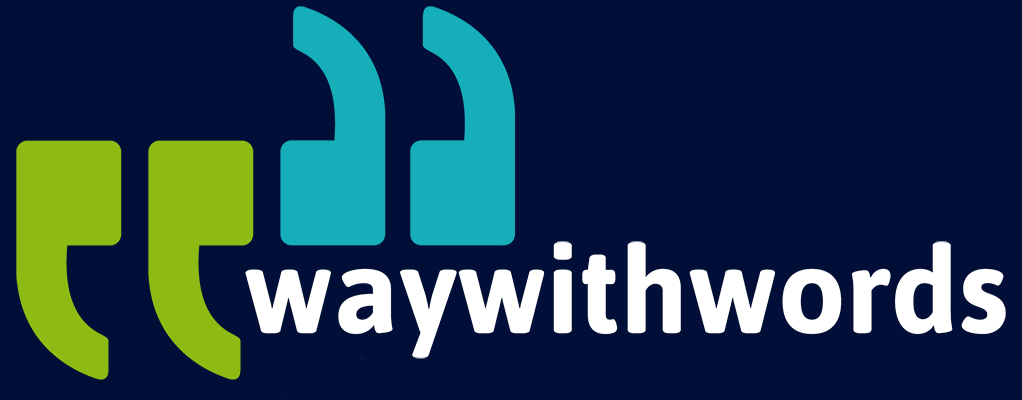How Transcription Services Support Corporate Training & E-Learning
Why Transcription is Essential to Training and E-Learning Success
Corporate training and e-learning are key drivers of knowledge sharing, staff development, and organisational growth. Yet, even the most engaging training session can lose its value if the content isn’t preserved and shared in a format that supports long-term learning. This is where transcription services come in. By turning spoken content into written educational documentation, transcription provides a bridge between live instruction and structured learning archives.
As more companies and institutions turn to digital and hybrid learning formats, the demand for accurate, accessible, and user-friendly materials continues to grow. Recorded training calls, presentations, product walkthroughs, and onboarding webinars are now the norm—but how do we ensure everyone gets the most from these recordings? Transcription services enable this content to be retained, revisited, and repurposed with ease.
Professionals responsible for learning and development are beginning to see transcription not as an add-on, but as a foundation. When done correctly, it ensures no detail is lost, everyone has equal access to materials, and learning becomes embedded into organisational culture.
Here are a few of the most commonly asked questions:
- How can transcription improve the accessibility of corporate training materials?
- Can e-learning transcripts support multilingual teams and international learners?
- What role does transcription play in regulatory compliance and documentation?
This short guide explores how transcription services help transform spoken content into practical, long-lasting resources that support a wide range of corporate and educational needs.
Educational and Corporate Transcription Key points
1. Providing Accessible Training Materials Through Text-Based Content
Access to learning materials shouldn’t be limited by hearing ability or personal learning style. While video and audio content is valuable, not everyone learns best through listening alone. Transcription provides a direct path to inclusion by making spoken content available in written form.
Text-based content allows learners to engage at their own pace, read and reread complex sections, and quickly search for important information. This is especially important in high-pressure work environments where employees need quick answers without sifting through an entire video or waiting for a trainer’s response.
For employees with hearing impairments, transcriptions are essential. They provide equal access to the same content without needing separate resources. For visual learners, transcripts reinforce understanding. For busy professionals, they make it easier to catch up on missed sessions.
- Improves accessibility for hearing-impaired and neurodivergent learners
- Makes it easier to navigate training content and refer back to it when needed
- Supports different learning preferences and processing speeds
- Provides clarity for those who speak English as a second language
2. Enhancing Learning Retention with Transcribed Lectures and Presentations
Memory retention improves significantly when learners receive information through more than one mode. Watching a presentation while reading along with a transcript reinforces key messages and enhances recall.
When a transcript is provided, learners can annotate the text, highlight key ideas, and form personal notes, which helps embed knowledge. This is particularly useful in technical training or compliance sessions where precision is key. Transcripts also support self-testing: learners can cover sections and try to recall or summarise what was said.
Studies have shown that retention increases when content is reviewed in multiple formats and revisited over time. Transcripts are a natural partner to spaced repetition and other evidence-based learning techniques.
- Promotes active learning and content engagement
- Allows for annotation, note-taking, and summarisation
- Helps learners prepare for assessments and certifications
- Makes review and repetition practical for long-term retention
3. Supporting Multilingual Education and Employee Onboarding
Many businesses operate across regions, with teams made up of people from different linguistic and cultural backgrounds. One of the challenges in global training is ensuring consistency in messaging, especially when the same session is delivered in multiple languages.
Transcripts make it easier to manage and localise content. Rather than translating from audio—which can be time-consuming and error-prone—translators can work from accurate transcripts. This improves the quality of translated material and ensures uniformity across languages.
For onboarding new hires in different countries, having transcribed versions of policies, product walkthroughs, and induction meetings in local languages improves engagement. It sets a professional tone, reduces confusion, and encourages questions based on clear written references.
- Simplifies the translation process for international training
- Improves accuracy and quality of localised materials
- Supports inclusive onboarding for global workforces
- Reduces the need to duplicate training sessions across regions

4. Improving Compliance with Corporate Training Regulations
Documentation plays a critical role in meeting industry regulations. In sectors like healthcare, finance, legal services, and engineering, regulations often require proof that employees have completed specific training and understood the content delivered.
By transcribing all training sessions, organisations can demonstrate exactly what was presented, when, and to whom. This written evidence supports compliance audits, resolves disputes, and verifies that key points were covered during the session.
Moreover, training transcripts help HR and legal teams conduct internal investigations if needed. If an issue arises that may relate to training gaps, transcripts provide an accurate record to refer to.
- Creates legally robust records of compliance training
- Reduces risk in the event of audits or investigations
- Documents the scope and delivery of essential information
- Provides ongoing proof of content delivery for regulatory bodies
5. Creating Reusable Content for Future Training Modules
Every training session is an investment in time, knowledge, and company resources. Transcripts ensure that investment pays dividends. Rather than delivering content once and letting it fade, transcripts allow material to be reused, repackaged, and referenced in future learning efforts.
A recorded team meeting can become the basis for an internal policy guide. A webinar can be edited into smaller training segments with supporting text. A Q&A session can form part of an FAQ resource. This type of repurposing not only saves time but strengthens knowledge consistency across the organisation.
Learning and development teams often struggle with content creation deadlines. Having a base of transcribed material provides a foundation from which they can build new modules quickly and accurately.
- Encourages content repurposing into multiple formats
- Reduces time spent re-creating learning material from scratch
- Builds an internal library of searchable reference documents
- Improves organisational knowledge management
6. Making E-Learning Platforms More User-Friendly
User experience is central to the success of any e-learning platform. Learners are more likely to complete training if it’s intuitive, responsive, and flexible to their needs. Transcripts enhance platform accessibility and contribute directly to a better learner experience.
Many users prefer reading along while watching a video or skipping to sections they find most relevant. In environments where sound isn’t practical—such as shared offices, airports, or at night—text-based content ensures the training can continue uninterrupted.
Additionally, including transcripts can improve SEO rankings for publicly available training content, driving greater reach and visibility.
- Enhances usability in different learning environments
- Encourages learner engagement and completion
- Supports content navigation through keyword search
- Increases training visibility through SEO benefits
7. Supporting Visual and Reading-Based Learners
While spoken communication is dominant in many training sessions, not all learners thrive with this method alone. Visual and reading-based learners prefer digesting information through text, diagrams, and structured reading materials.
Transcripts cater to these preferences. They offer structured, written documentation that can be reviewed at any time. In subjects with technical language or complex processes, written explanations often clarify and reinforce ideas that are harder to grasp in speech alone.
Neurodivergent learners—such as those with ADHD or dyslexia—may also benefit from having material in written form to accommodate their learning styles.
- Aligns with diverse learning preferences and cognitive needs
- Clarifies technical terms and dense information
- Encourages learners to explore topics in more depth
- Supports universal design for learning (UDL) principles
8. Strengthening Internal Communication and Documentation
Transcripts don’t just support individual learners—they also help entire teams stay aligned. In large organisations, internal miscommunications can cost time and money. By keeping transcripts of key briefings and training sessions, teams can refer back to what was agreed and reduce the risk of confusion.
Training material that’s well documented can be shared with stakeholders who couldn’t attend or used to onboard new members. Having a written summary also reduces repetition in meetings and ensures that information is communicated consistently.
Departments that frequently interact, such as HR, IT, and operations, benefit greatly from having shared, accessible reference documents.
- Promotes consistency and accountability across departments
- Supports team alignment with shared information access
- Reduces duplication of effort and misunderstanding
- Improves the traceability of decisions and actions

9. Facilitating Instructor and Learner Feedback
Feedback is an important part of any effective training programme. Transcripts create a transparent foundation for constructive feedback—both from trainers and learners. Trainers can review their own sessions to improve delivery. Learners can highlight sections they found unclear or especially useful.
With transcripts, it’s easier to evaluate what was actually communicated versus what was understood. Feedback sessions become more specific when everyone has a clear reference point. Over time, this cycle of review improves training quality.
Organisations that invest in transcript-based feedback loops often see more engaged learners and more effective trainers.
- Improves clarity and relevance of learning content
- Allows for accurate feedback and quality assessment
- Identifies content gaps or confusion points
- Encourages collaboration between trainers and learners
10. Archiving and Knowledge Management
Corporate knowledge is an asset that must be preserved. Staff come and go, processes evolve, and training needs shift. Transcripts form part of a company’s institutional memory, ensuring that valuable knowledge isn’t lost over time.
Archived transcripts can support future onboarding, compliance checks, or product development initiatives. They also provide a baseline for comparing changes in policy or procedures over time. As organisations grow, a centralised archive of training transcripts supports consistency and informed decision-making.
- Builds a structured archive of company knowledge
- Supports continuity during staff transitions
- Enables historical comparison of training approaches
- Centralises learning for efficient access and sharing
5 Key Tips for Supporting Training with Transcription
- Pair transcripts with original recordings to enhance multisensory learning and accessibility.
- Add timestamps and speaker labels for better navigation and context clarity.
- Translate from transcripts rather than audio to ensure higher translation quality.
- Keep transcripts updated as your training evolves to maintain relevance.
- Index and tag transcripts in your learning management system for quick discovery.
Integrating Transcription into a Smarter Learning Strategy
Transcription services are not simply tools for accessibility—they are a strategic advantage for modern training and development. Whether used to ensure compliance, support learners across regions, or build a reliable internal knowledge base, transcription transforms spoken word into enduring value.
For corporate trainers, HR teams, e-learning providers, and education professionals, investing in accurate transcripts enhances the effectiveness and longevity of their learning content. Transcripts support diverse learner needs, create structured learning assets, and open the door to repurposing content with minimal effort.
By integrating transcription into every stage of the training process—from content creation to delivery and evaluation—organisations are better equipped to build cultures of learning, adaptability, and shared knowledge. In a world where attention is scarce and information is abundant, transcripts cut through the noise and create clarity.
Further Resources
E-learning (Wikipedia): Discusses online learning strategies, benefits, and accessibility improvements with transcription services.
Way With Words: Transcription Services: Way With Words employs advanced technology and highly skilled transcribers to overcome common challenges in transcription, ensuring that clients receive accurate and reliable transcripts regardless of the complexity of their audio files.
